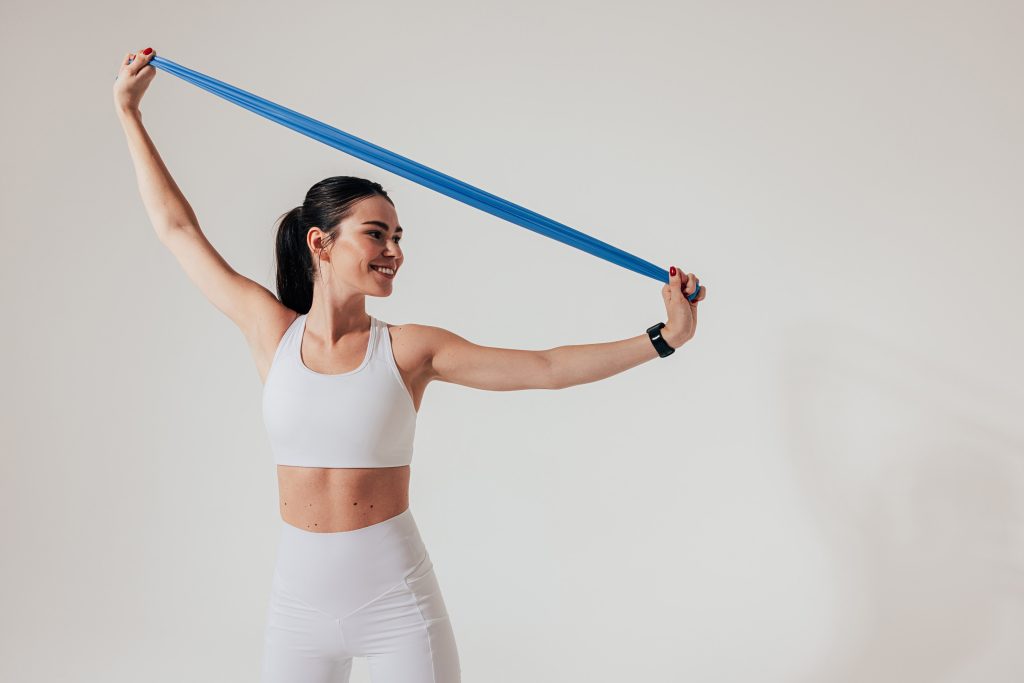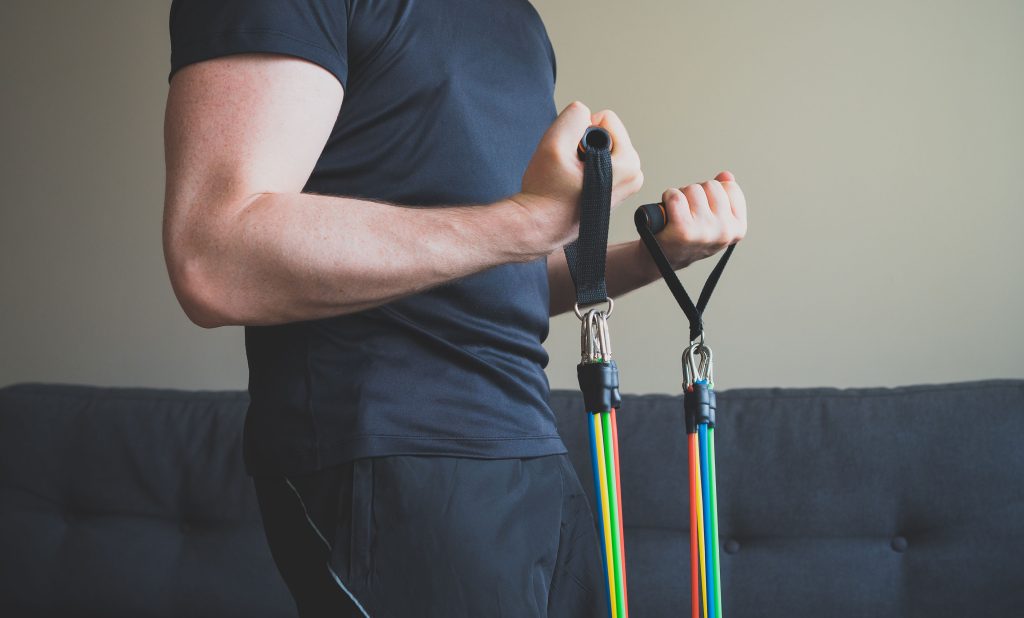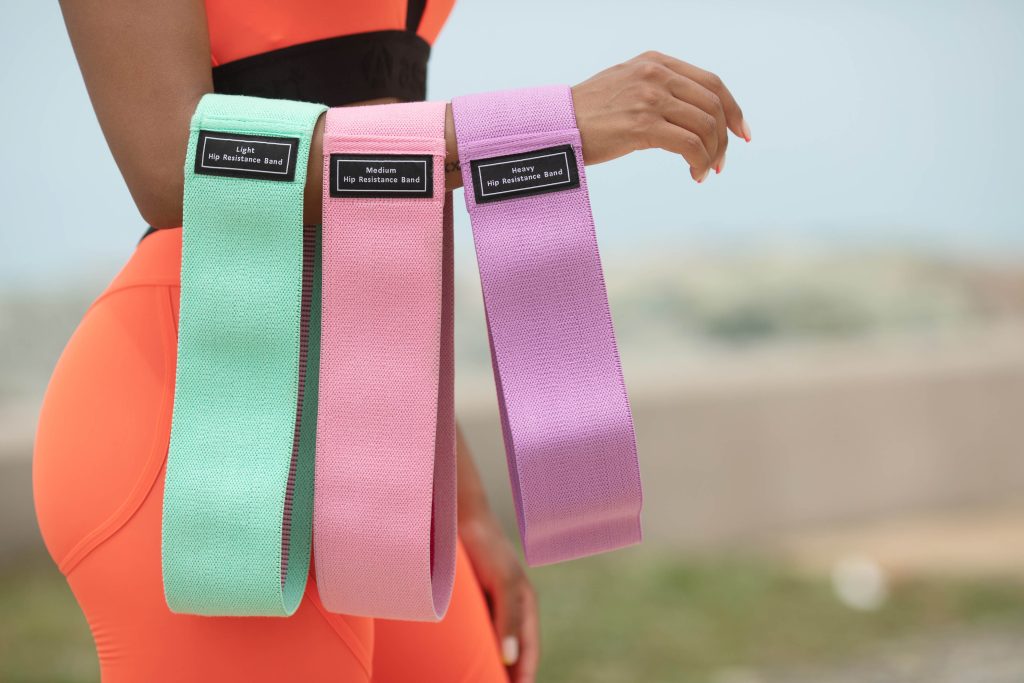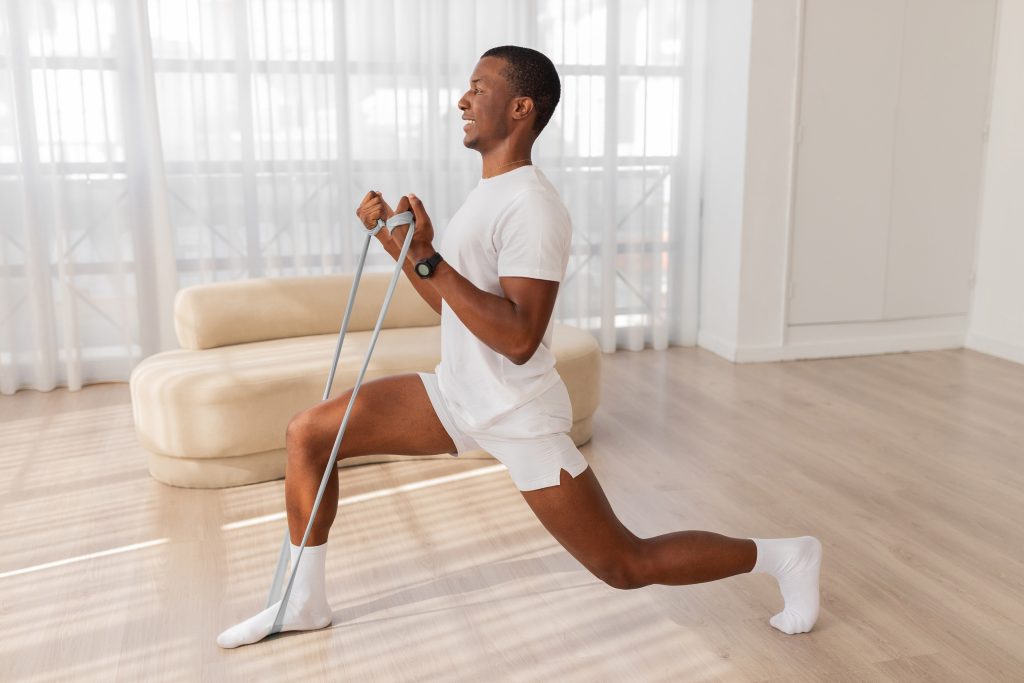
When you start looking for new resistance bands, the sheer number of brands and sets out there can be overwhelming.
Many go in expecting to see familiar brands. Instead, they come across sets from names like Polygon, WSAKOUE, and LEEKEY.
The size of sets ranges from bare-bones three-band kits to extensive 16-band sets aimed at enthusiasts and athletes. Additionally, sets from different brands that include the same number of resistance bands aren’t always comparable. Almost all bands are color-coded, but when you dive into the specs, you’ll find that the level of resistance in each band can vary from the next.
Although finding the right resistance bands to match your fitness level and goals is fairly straightforward, it helps to get an overview and recommendations. There’s more to choosing the right set than first meets the eye.

Flat Bands vs Tube Bands
The most significant decision you need to make is whether to go with flat bands or tube resistance bands.
For the most part, it comes down to the exercises you plan to do.
Flat bands can be more comfortable to use which is why they are often recommended for Pilates and yoga. If you aim to build flexibility and do diverse exercises, flat bands have an advantage.
Tube bands excel at exercises for toning muscles and building strength. In addition to providing more resistance, these bands are often stackable. For example, if you attach two bands with 10 lbs. and 20 lbs. of resistance to handles you now have 30 lbs. of resistance. With a set of five resistance bands of varying resistance that opens up an incredible amount of possibilities.
Another aspect to consider is longevity. Tube bands last longer than tube bands. While any resistance band can potentially snap, tube bands are more rugged and less prone to snapping.

Finding the Right Size Kit
Nowadays, it’s rare that you see resistance bands being sold individually. SPRI is an exception as it’s a well-known brand that offers both kits and individual bands.
Flat bands typically sell in sets of three or five. The five-band sets offer a wider variety of resistance levels. Often, the included bands are described as extra light, light, medium, heavy, and extra heavy. With flat bands, the level of resistance is fairly subjective. Additionally, the difference between a medium band and a heavy band isn’t that great.
With tube bands, sets of five bands are the standard. Considering you can stack resistance bands, this meets the needs of most people. You can get anywhere from 10 lbs. of resistance with a single band to 150 pounds and up by using multiple bands with many sets.
Bodylastics in particular is known to offer extensive sets aimed at people who want the highest levels of resistance and the widest possibilities. Five, six, seven, eight, and even 16 band sets are available. Athletes, people in MMA, and bodybuilders will appreciate these choices, but for the average person, it’s overkill once you get past six or seven bands.

Established vs. Emerging Brands
Right now, emerging brands are making big waves in resistance bands. Recognizable names like Bodylastics, Beachbody, and Black Mountain Products remain popular but no longer dominate like they once did.
Bodylastics calls their product the “original, stackable resistance band set.” The majority of tube-style sets available are heavily influenced by its approach to design.
When Bodylastics first surged in popularity, tube resistance bands with handles attached were the norm. Bodylastics introduced the idea of handles you can attach and detach. This shift allowed the company to offer high-quality handles with a comfortable grip and improved hardware as it eliminated redundancy. It also made its resistance bands stackable, meaning you can attach two or three bands to handles to increase resistance.
Beachbody was once a prominent player in resistance bands. While the company still offers power loops and resistance loops on its BODi website, latex tube bands with detachable handles are missing. Beachbody appears to be moving away from offering equipment and focusing on its core business of fitness programs.

Value vs. Quality
Emerging brands like Polygon can slightly undercut names like Bodylastics and Black Mountain Products in terms of price. Thus, the popularity of emerging brands has gained a lot of momentum over the past several years.
At first glance, there’s no notable difference between a set from Bodylastics and other names that aren’t well-known.
Bodylastics might be the original but almost everything about their design has been copied. The patent it holds for reducing the incidence of snapping bands creates an exception. There’s a woven inner cord inside their latex tubes which makes them stronger and resilient.
Thus, if it’s important to you to get a set that lasts five or six years on average rather than three or four years, Bodylastics is worth it. In the end, it could not only prevent injury from a band that snapped but also cost you less in the long term as replacements are needed less often.

Conclusion
Resistance band sets that look similar may have more differences than you think.
Most sets have followed the groundwork set by Bodylastics in terms of basic design. However, the patent on its inner cords that prevents resistance bands from snapping continues to give Bodylastics an edge.
The market has been flooded with affordable options which are almost as good as the name brands options. However, since getting the best is only a matter of paying a bit more, the popularity of emerging brands could be considered misguided.
Researching about the best alternatives? Before you decide, check out this roundup of the top resistance band sets.





